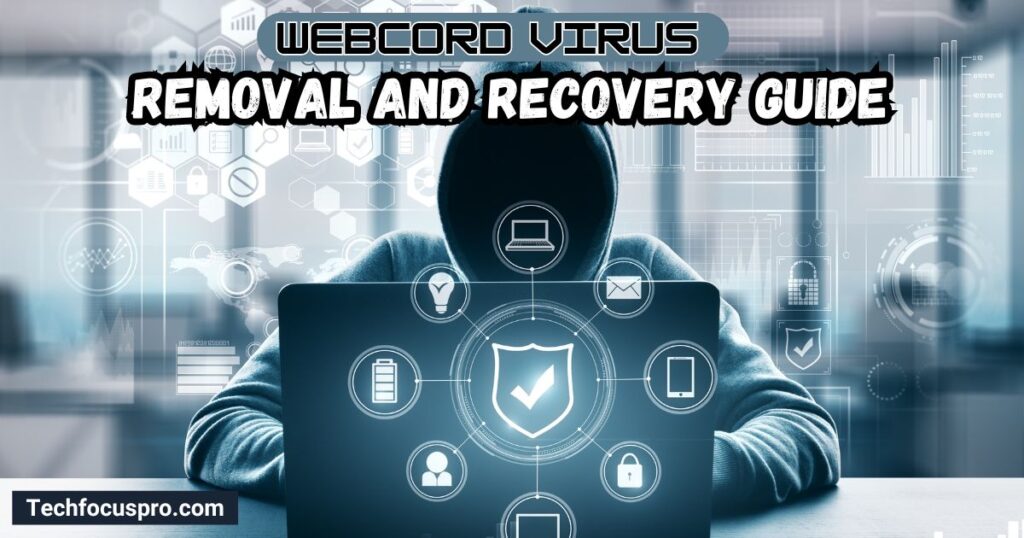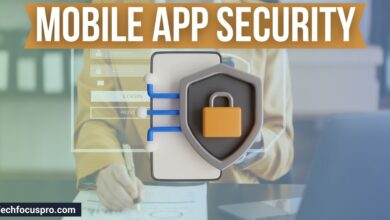WebCord Virus: Protection and Removal Guide

Introduction to WebCord Virus
The WebCord Virus is a malicious software program that targets computers and mobile devices to steal personal information and disturb processes. This virus briskly disguises itself as harmless software, making it hard for users to detect its presence. Once installed, it can harm files, spy on user activity, and quickly take control of the device.
The WebCord Virus first appeared when a surge of affected devices was reported, revealing its rapid spread through email attachments, malicious websites, and fake software updates.
Its ability to quickly infect vast computers and devices has made it a significant concern in the digital world.
How Does WebCord Virus Work?
The WebCord Virus operates sneakily and efficiently. Initially, it finds its way onto devices through cunning methods like email attachments that seem safe, websites filled with harmful code, or software updates that are actually fake. Once it lands on a device, this virus starts its dirty work.
It doesn’t pick and choose; it targets all sorts of data and systems, whether personal files, sensitive information, or crucial system data. What makes WebCord particularly nasty is its ability to copy itself, spread across multiple parts of the infected device, and even jump onto other devices connected to the same network.
Imagine if the virus were like a burglar who, after sneaking into a house, makes copies of themselves to ransack every room and even spread to neighbouring homes.
This fast replication and spreading process makes it hard to catch and stop the virus before it does significant damage. By blending into regular files and activities, WebCord makes it challenging for users and even some antivirus programs to notice it’s there until it’s too late.
Symptoms of Infection of WebCord Virus

Visible Signs on an Infected Device
Detecting the WebCord Virus early can be challenging, but several telltale signs may indicate an infection. Users might notice unusual pop-up ads or messages appearing randomly, which are not only intrusive but often lead to more malicious sites.
Significant computer or device performance slowdowns are typical, as the virus consumes resources.
Additionally, unexpected software crashes or the device repeatedly freezing signify that the WebCord Virus could disrupt normal operations in the background.
Performance Impact on the Device or Network
The WebCord Virus can severely impact the performance of both individual devices and entire networks. On a single device, it can hog processing power and memory, leading to sluggish responses and prolonged operation times for basic tasks.
For networks, the virus’s ability to replicate and spread causes bandwidth consumption to spike, reducing the availability of network resources for legitimate use and causing delays in data transmission.
This widespread impact can cripple business operations and significantly disrupt user experience.
Security and Privacy Implications for the User
The security and privacy implications of a WebCord Virus infection are profound. By theft of personal information, such as login credentials, monetary data, and other sensitive material, the virus leads users to uniqueness theft, financial losses, and privacy breaches.
Also, the virus can install extra malicious software without the user’s knowledge, more cooperating device security.
The loss of control over individual data and the potential for unauthorized access to private info pose significant risks, highlighting the importance of virus stoppage, early discovery, and removal.
What does the WebCord Virus do?

Short-term and Long-term Effects on Devices
The WebCord Virus, once it penetrates a device, can cause a range of instant (short-term) issues, such as slowing down your device, producing unexpected crashes, or generating annoying pop-ups.
In the long term, the effects can be much more severe. It might lead to the corruption of essential files, significant poverty of your device’s show, or even making it unusable. Over time, this virus can embed itself deeper into your system, making removal more inspiring and possibly leading to a complete device overhaul or extra.
Potential Dangers to Personal Data and Privacy
One of the most alarming aspects of the WebCord Virus is its possible cooperation with personal data and privacy. This malware can track your keystrokes, access your private files, and screen your online activities.
This investigation can lead to sensitive info such as passwords, monetary details, and personal photos being stolen, sold, or used for fake activities. The breach in privacy doesn’t just stop with the infected device, as it can spread to your contacts through the malware, duplicating itself via emails or messages from your accounts.
Economic Impact on Businesses and Individuals
The economic consequences of the WebCord Virus can be profound. The cost of removing the virus, possible data loss, and the need to replace severely affected hardware can amount to significant financial strain for individuals. Businesses, tiny and average creativities, may face even better challenges.
The infection can prompt personal time, loss of client trust, lawful repercussions from the hole of client information, and, in severe cases, could endanger the business tasks. The total impact of these variables can bring about significant monetary misfortunes, featuring the primary significance of proactive measures against such malware dangers.
Prevention and Safety Measures from Webcord Virus

Stopping the WebCord Virus from bargaining your devices requires watchfulness, the right tools, and an active approach to online security. By following these best practices, you can reduce the risk of infection and protect your data from this malicious software.
Best Practices to Avoid Infection
- Stay Informed: Always be aware of the latest threats and how they spread. Knowledge about the WebCord Virus and its transmission methods can help you avoid risky behaviours online.
- Be Cautious with Emails and Links: Do not click on links or download extras from unfamiliar or suspicious emails. Phishing is a usual method for dispersing viruses like WebCord.
- Use Strong Passwords: Guarantee that all your web-based accounts have areas of strength for having passwords. Try to avoid utilizing similar secret keys across numerous locales.
- Educate Others: Share your insight about the WebCord Infection and its avoidance with companions, family, and associates. Mindfulness is vital to aggregate network protection.
Security Software and Settings to Enhance Defense
- Install Antivirus Software: Use reputable antivirus software and keep it updated. It can detect and remove the WebCord Virus before it causes harm.
- Enable Firewall: A firewall helps block unapproved admission to your PC or organization. It also hinders infections and other vindictive programming.
- Regular Updates: Ensure you’re working system and all requests are up to date. Developers often issue updates to fix weaknesses that viruses exploit.
Updates and Patches Importance
- Close Security Gaps: Updates and fixes frequently incorporate fixes for security openings that the WebCord Infection could use to penetrate your framework.
- Enhance Performance: In addition to security fixes, updates can advance the performance of your software, making your devices less prone to malware.
- Stay Ahead of Threats: Frequently informing your software means you benefit from the latest security events designed to fight new and developing viruses like WebCord.
Adhering to these prevention and safety measures can strengthen your defence against the WebCord Virus, ensuring your digital environment remains secure and your personal data is protected.
Removal and Recovery Guide of Webcord Virus By Techfocuspro

After knowing how to prevent the WebCord Virus, it’s similarly crucial to understand how to remove it and recuperate your system if it gets infected. Follow these up-front and user-friendly steps to clean your device and return it to a fit state.
Step-by-Step Guide on Removing the WebCord Virus
- Isolate Your Device: Priorities should be straight and disengaged from the web and other organizations to prevent the infection from spreading to different gadgets. Think about it like putting a virtual quarantine sign on your gadget.
- Enter Safe Mode: Boot your device in Safe Mode if possible. Protected Mode runs just the fundamental projects, making it more straightforward to erase malignant programming without it taking cover behind different projects.
- Run Antivirus Software: Use your program to run a full system scan. It should sniff out and offer to remove the WebCord Virus. If you don’t have antivirus software, now’s the time to get one.
- Manual Clean-Up: If the antivirus can’t catch it all, you might need to go on a digital hunt. Look for any unfamiliar programs installed when the symptoms started and uninstall them.
- Reset Your System: If the virus has dug in its heels, resetting your device to its factory settings could be the clean slate you need. Remember, this wipes everything, so it’s the last resort.
Recovery of Files and System Post-Infection
- Backup Your Files: Hopefully, you’ve backed up your files regularly. If so, you can restore them after cleaning your device. If not, consider this a tough-love lesson in the importance of backups.
- Use File Recovery Software: If you’ve lost files and didn’t have a backup, file recovery software might be able to help you rescue some of them. Not all hope is lost—yet.
- Update Everything: Once your device is clean and your files are back in place, update your operating system, browsers, and any software you use. This minimizes future vulnerabilities.
When to Seek Professional Help?
- Overwhelmed: If the steps above sound like a foreign language or you’ve tried them without success, it’s time to call in reinforcements.
- System Malfunction: If your device still behaves like it’s haunted by digital ghosts after your best removal efforts, professional tech support can help exorcise them.
- Sensitive Information: For businesses or if you handle sensitive information, consulting a professional cybersecurity service isn’t just recommended; it’s essential. They can ensure the virus is gone and help reinforce your defences.
Removing the WebCord Virus and recovering your system doesn’t have to be a nightmare. With these steps, you’re on your way to returning to a secure and healthy digital life. And if you hit a wall, remember that professional help is just a call or click away!
Conclusion
In conclusion, addressing the threat posed by the WebCord Virus underscores the essential need for stringent security measures, including routine software updates and comprehensive system scans. These practices are vital in defending against the virus’s ability to disrupt device functionality and compromise sensitive information, ultimately preventing significant financial loss.
The discussion highlights the importance of initial discovery and deploying effective removal strategies alongside robust recovery processes to alleviate the malware’s damaging effects. Attractive in vigilant online behaviour and maintaining robust cybersecurity practices, such as confirming up-to-date antivirus software and data backups, are imperative steps in this ongoing battle.
By uniting in our efforts and enhancing our cybersecurity mindfulness, we can shield our numerical spaces from the WebCord Virus and similar cyber threats, thereby deterring harm to our personal and professional data.






